Article and Photos by Sonya Bernard-Hollins
Headline photo: Sharon Carlson, Ph.D., and her staff get their turn at the ceremonial groundbreaking of the new Legacy Collection Center where the WMU Archives and Regional History Collection will relocated in 2013.
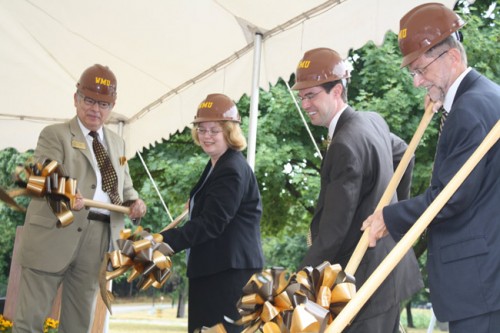
KALAMAZOO (MICH.)- On July 19, just before the day would become sweltering hot, nearly 100 students, community leaders, and Western Michigan University staff, and joined in the groundbreaking of a new building. The 16,000-square-foot Legacy Collection Center would cost $8.3 million to complete, but it would be worth it. The building will be officially a part of University Libraries and will be built on WMU’s Oakland Drive Campus.
The new home for the archives is one Dr. Sharon Carlson has long anticipated. After all, it was 20 years ago that the WMU Archives and Regional History Collection was organized in the gymnasium of East Hall, the first building on WMU’s campus in 1903. Carlson joked that no longer will long extension cords be needed for researchers to plug in their laptops. No longer will she have to be the “only college archive located in a swimming pool (the former school’s pool). And, she will no longer have to be an on call bat remover at East Hall. During the ground breaking, dignitaries such as State Rep. Sean McCann, funding agents the Kalamazoo Community Foundation and Irving S. Gilmore Foundation representatives, and construction leaders of SHW Group, took their part at turning the shovel. Carlson, her staff and student interns also put on WMU hardhats and grabbed a shovel for their ceremonial contribution to the ground breaking.
This writer’s welcoming of the new center is bitter sweet. For years my research on 1927 graduate, Merze Tate, has led to me discovering the papers of an amazing women in history. I have been able to imagine the way the halls were when Merze Tate did her student teaching at University High, which was connected to the East Hall campus. Others in Michigan and throughout the country come to the archives to research Michigan and family history as well. The Legacy Collections Center also will house the complete archives of the Kalamazoo Gazette, an arrangement that was worked out earlier this year and announced by the Gazette in May. More than 1,800 people a year visit the archives, which contains gems of history, which have been donated for public use by business, WMU alumni, and others. Students who intern in the archives get the experience needed to become curators and staff members at some of the most prestigious libraries and research facilities in the country.

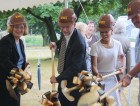
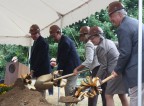
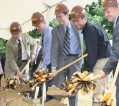
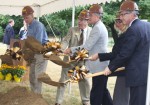
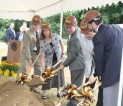
 According to WMU public relations department, the new archives campus includes the grounds and some of the original buildings of the Kalamazoo State Hospital, all of which constitute a Michigan historic area. The new legacy facility will be at the end of Calhoun Street, a road that dates back to the property’s state hospital days. It is the first entrance into the grounds north of Howard Street. The new building will include a large reading room with 1,250 linear feet of shelving, tables and seating for 24. The reading room will have the capacity to be transformed into a 72-seat event center for such activities as public lectures. The center also will have a two-story storage area with 30-foot tall compact shelving for materials and will have ample public parking just steps away.
According to WMU public relations department, the new archives campus includes the grounds and some of the original buildings of the Kalamazoo State Hospital, all of which constitute a Michigan historic area. The new legacy facility will be at the end of Calhoun Street, a road that dates back to the property’s state hospital days. It is the first entrance into the grounds north of Howard Street. The new building will include a large reading room with 1,250 linear feet of shelving, tables and seating for 24. The reading room will have the capacity to be transformed into a 72-seat event center for such activities as public lectures. The center also will have a two-story storage area with 30-foot tall compact shelving for materials and will have ample public parking just steps away.
With the new building, comes new change. However, the old East Hall too, will undergo some changes. Members of the Friends of Historic East Campus (of which I am a member) want to make sure the university ensures the historic perspective and integrity of East Hall and the other trio of buildings which surround it.
